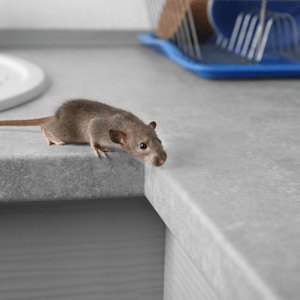A Brief Lesson About the Mice that Infest Your Massachusetts Home
Let’s set the scene: It’s just after dark. You’re settling in for a quiet movie night at home. You walk to the kitchen to prepare some popcorn, flick on the light, and PEW! A little flash of something brownish shoots across the floor to an unknown destination. You know enough to recognize the intruder as a mouse, but now what? Take a deep breath, slow your heart rate. While you do that, here is some information about two of the most common mice that can invade your Massachusetts home.

The deer mouse and the house mouse are the two most common culprits of home infestations. While they may share similar traits, they are not from the same family and have some key differences that help with identification.
The deer mouse can reach 10.5cm in length with a tail between 6-9cm and weigh in around 13-27 grams. Coats are brown or tan with a white belly and feet. Eyes and ears are smaller than those of the house mouse.
House mice reach 7.5-9.5cm and 12-30 grams when full grown, with a tail about the same length as the body. The coat will be a solid gray-brown, without the distinct white underside of the deer mouse. Large eyes and ears will also set the house mouse apart.
Deer mice enjoy a varied diet of everything from seeds, plants, berries, root vegetables and mushrooms to insects, snails and worms. House mice prefer seeds and cereals, but will eat vegetables, fruits, and meat sources as well. Both are nocturnal, typically emerging around dusk and having their last feed around sunrise.
Some of the most important information about these mice concerns breeding ability. Females of both species reach sexual maturity around 6 weeks of age. The deer mouse can have 2-4 litters per year of 4-6 pups each. House mice are capable of 5-10 litters per year of 4 up to 16(!), pups. As mother mouse is having her second litter, her first is reaching reproducing age and beginning to breed. This is how a mouse infestation can so rapidly get out of hand.
While this information may help you further understand what species of mouse has taken up residence in your home, professional identification is necessary for establishing proper control and prevention techniques. Because mice can carry diseases as well as parasites like ticks, fleas, and lice, it’s always a good idea to bring in the pros to help you take your home back. Call Burgess today for an inspection and to learn more about our services-- We’ll send someone out as quick as…. Well, a mouse.


